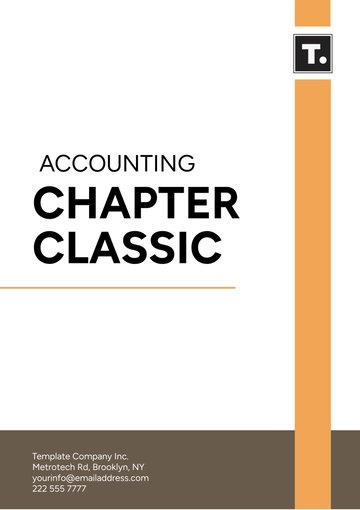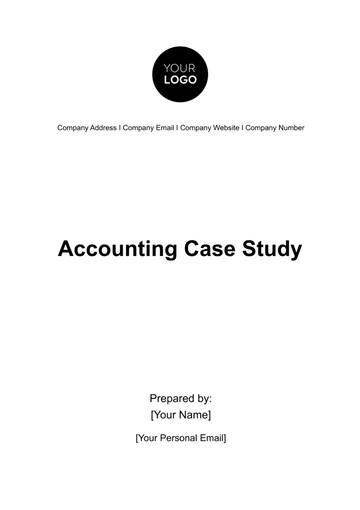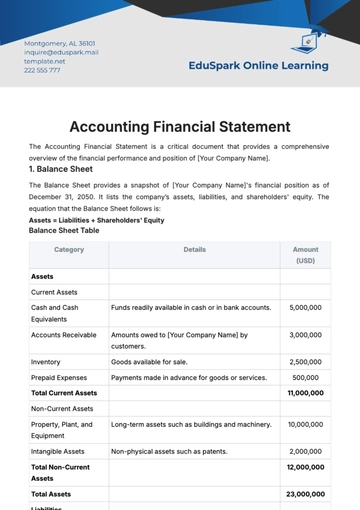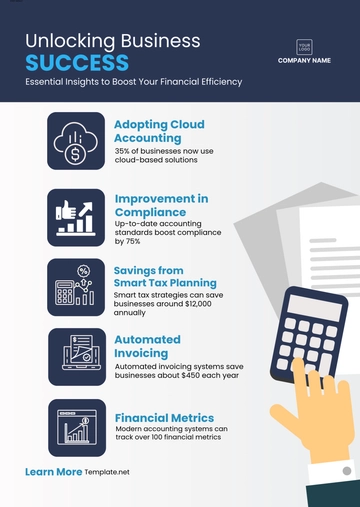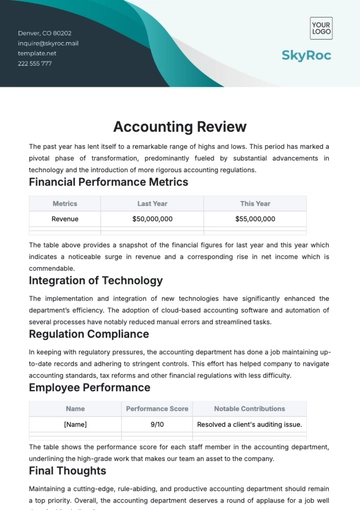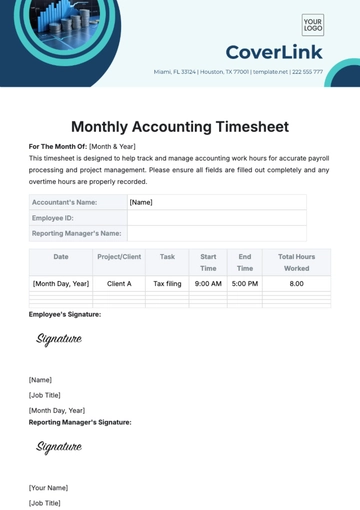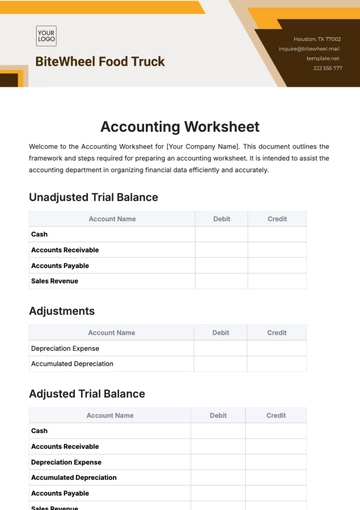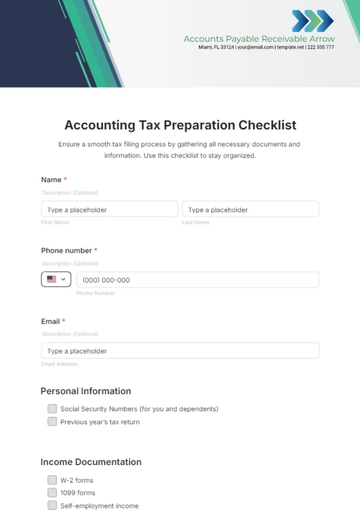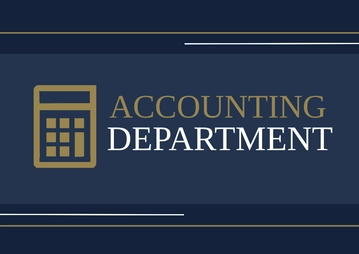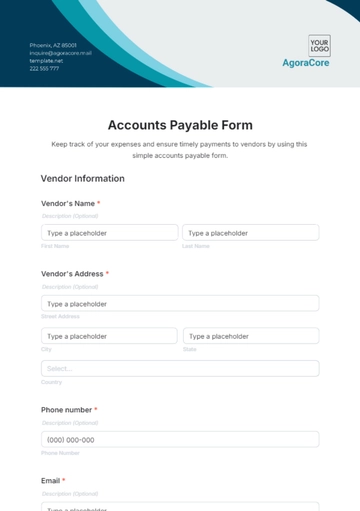Free Financial Accountability Framework
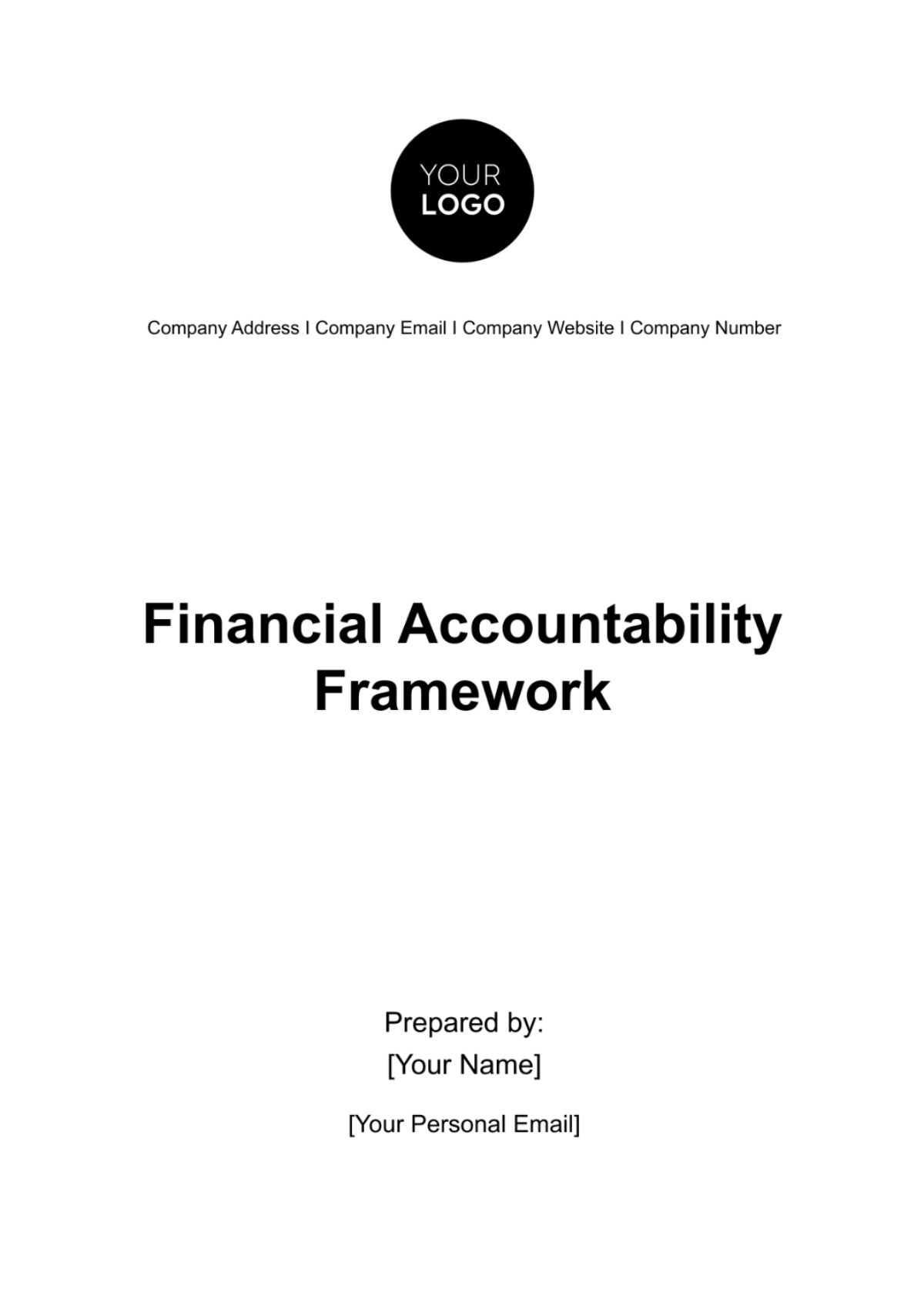
I. Introduction
A. Purpose
The framework is established to create a robust and standardized system governing financial management, aiming to enhance accountability, transparency, and regulatory compliance across all financial activities.
B. Scope
This framework applies to every member of our team engaged in financial activities, encompassing budgeting, expenditure authorization, financial reporting, and compliance. This is to ensure a comprehensive and consistent approach to financial management.
C. Objectives
The objectives of this framework for:
Enhance Decision-Making
Provide a structured approach to financial management, facilitating informed decision-making at all organizational levels.
Ensure Compliance
Establish and enforce procedures to guarantee compliance with relevant financial laws, regulations, and industry standards.
Foster Transparency
Promote transparency in our financial activities by implementing reporting mechanisms that deliver timely and accurate information to stakeholders.
II. Roles and Responsibilities
A. Finance Manager
As stewards of financial integrity, Finance Managers oversee financial activities, ensuring the accuracy and integrity of financial data while providing strategic guidance to align financial practices with organizational objectives.
B. Accounting Team
The Accounting Team is responsible for recording transactions, maintaining ledgers, and upholding compliance with accounting standards under the guidance of the Finance Manager. They play a crucial role in maintaining the accuracy and integrity of financial records.
C. Executive Leadership
Executive Leadership plays a crucial role in approving budgets, providing strategic direction, and ensuring that financial decisions align with organizational goals and objectives. They provide the overarching vision for financial management.
D. Budget Analysts
Budget Analysts contribute to the development, monitoring, and analysis of budgets, offering valuable insights to support financial decision-making. They provide analytical support to ensure budgets align with organizational goals.
E. Internal Auditor
Internal Auditors conduct regular audits to assess the effectiveness of internal controls, identifying areas for improvement and ensuring compliance within the financial landscape. Their role is critical in maintaining the integrity of internal financial processes.
F. Compliance Officer
The Compliance Officer monitors and ensures adherence to financial laws, regulations, and internal policies, safeguarding our commitment to ethical financial practices. They play a pivotal role in upholding regulatory compliance and ethical standards.
G. Risk Management Team
The Risk Management Team identifies, assesses, and mitigates financial risks, integrating risk considerations into our decision-making processes. They contribute to the development of strategies to manage and minimize financial risks.
H. Procurement Officer
The Procurement Officer oversees the procurement process, ensuring compliance with financial regulations and obtaining value for money in our purchases. They play a crucial role in optimizing procurement practices and ensuring cost-effectiveness.
I. Financial Analysts
Financial Analysts analyze financial data, trends, and performance metrics, providing insights to support strategic financial planning. They contribute valuable insights for effective financial decision-making and strategic planning.
III. Authorization and Approval Processes
A. Expenditure Authorization
Establishment of Procedures
Develop and implement clear expenditure authorization procedures, ensuring that all expenditures are approved based on predefined levels of authority. This process ensures responsible financial management and resource allocation.
Regular Review and Updates
Periodically review and update expenditure authorization procedures to adapt to changing organizational needs and industry best practices. This ensures ongoing relevance and effectiveness in financial decision-making.
B. Budget Approval
Executive Leadership Involvement
Budgets require approval from the Executive Leadership team. Any modifications to approved budgets must be documented and communicated promptly. This step ensures alignment with organizational goals and effective resource allocation.
Transparent Approval Process
Implement a transparent and collaborative budget approval process involving key stakeholders. This enhances the accuracy and relevance of financial planning, fostering a collective understanding of financial priorities.
IV. Compliance and Regulatory Requirements
A. Legal and Regulatory Compliance
Adherence to Standards
Adhere rigorously to all applicable financial laws, regulations, and industry standards. Regular compliance reviews will be conducted to ensure steadfast adherence. This commitment ensures the company operates within the legal and regulatory framework.
Monitoring and Communication
Establish a systematic process for monitoring changes in financial regulations. Promptly communicate updates to relevant personnel to maintain ongoing compliance. This proactive approach minimizes the risk of non-compliance and enhances regulatory awareness.
B. Updates and Training
Continuous Monitoring
Stay informed about changes in financial regulations through continuous monitoring. Conduct regular training sessions to ensure ongoing compliance among our financial personnel. This practice ensures that the team is equipped with updated knowledge for effective financial decision-making.
Comprehensive Training Program
Develop a comprehensive training program that addresses evolving regulatory requirements. Provide continuous professional development for financial personnel, fostering a culture of compliance and proficiency in navigating complex financial landscapes.
V. Financial Reporting and Transparency
A. Reporting Procedures
Timely Reporting
Ensure timely and accurate financial reporting, providing stakeholders with a comprehensive view of the company's financial performance. This supports informed decision-making and fosters transparency.
Standardized Reporting Format
Establish standardized reporting formats to enhance consistency and comparability across financial reports. This ensures that stakeholders can easily interpret and analyze financial information.
B. Stakeholder Communication
Regular Updates
Provide regular updates to stakeholders on financial performance and key milestones. Transparent communication builds trust and helps stakeholders understand the company's financial health.
Interpretation Support
Offer support materials and explanations alongside financial reports to assist stakeholders, especially those without a financial background, in interpreting the information accurately.
VI. Internal Controls and Risk Management
A. Internal Control Procedures
Risk Assessment
Conduct regular risk assessments to identify potential financial risks. Implement internal controls to mitigate these risks and ensure the integrity of financial processes.
Segregation of Duties
Establish a segregation of duties to prevent conflicts of interest and reduce the risk of fraudulent activities. This strengthens internal controls and safeguards financial integrity.
B. Risk Management Strategies
Risk Mitigation Plans
Develop and implement risk mitigation plans based on identified financial risks. These plans should be dynamic, adapting to changes in the business environment.
Continuous Monitoring
Continuously monitor and reassess risks to ensure the effectiveness of risk management strategies. This proactive approach minimizes the impact of unforeseen financial challenges.
VII. Performance Monitoring and Evaluation
The table below presents a selection of performance metrics designed to evaluate key aspects of financial management within the organization.
Metric Category | Frequency | Responsible Party | Evaluation Criteria |
Compliance Rate | Biannually | Compliance Officer | Percentage of adherence to regulatory and internal policies |
Establishing a robust system for performance measurement and metrics is essential for the continuous improvement of financial processes within the organization. By quantifying key aspects of financial management the organization gains valuable insights into its operational efficiency. The systematic evaluation of these metrics not only supports data-driven decision-making but also contributes to organizational resilience and sustained financial health.
VIII. Ethical Practices and Integrity
A. Code of Conduct
Development and Implementation
Develop and implement a comprehensive Code of Conduct for financial practices. This code should articulate ethical standards, promoting integrity, honesty, and responsible financial decision-making.
Training and Awareness
Conduct regular training sessions to ensure that all team members are well-versed in the Code of Conduct. Promote awareness of ethical practices and the importance of upholding integrity in financial activities.
B. Whistleblower Protection
Establishment of Protocols
Establish clear protocols for whistleblowing to encourage the reporting of unethical practices. Ensure the protection of whistleblowers from retaliation and provide a confidential and secure reporting mechanism.
Regular Review
Periodically review and update whistleblower protection protocols to align with best practices and legal requirements. This ensures the continued effectiveness of the system in promoting accountability.
IX. Technology and Data Security
A. Data Protection Policies
Development and Implementation
Develop and implement robust data protection policies for financial information. Ensure compliance with data protection laws and industry standards to safeguard sensitive financial data.
Access Controls
Implement stringent access controls for financial systems and databases. Restrict access to authorized personnel only, minimizing the risk of unauthorized data exposure or manipulation.
B. Cybersecurity Measures
Regular Security Audits
Conduct regular cybersecurity audits to identify vulnerabilities and weaknesses. Implement measures to address identified risks promptly and enhance the overall cybersecurity posture.
Employee Training
Provide comprehensive training to employees on cybersecurity best practices. Foster a culture of cybersecurity awareness to reduce the likelihood of security breaches resulting from human error.
X. Audit and Evaluation
A. External Audits
Engagement of External Auditors
Engage external auditors to conduct periodic and thorough audits of financial records. This external perspective ensures objectivity and compliance with auditing standards.
Actionable Recommendations
Act on recommendations provided by external auditors promptly. Address identified issues to enhance financial processes.
B. Internal Audits and Evaluations
Regular Internal Audits
Conduct regular internal audits to assess the effectiveness of internal controls. Identify areas for improvement and implement corrective actions to strengthen financial processes.
Performance Evaluations
Implement performance evaluations for financial systems and personnel. Use these evaluations to recognize achievements, address shortcomings, and drive continuous improvement.
XI. Monitoring and Evaluation
The table below provides a snapshot of key monitoring mechanisms and evaluation criteria:
Monitoring Area | Frequency | Responsible Party | Evaluation Criteria |
Expenditure | Quarterly | Internal Auditor | Adherence to defined expenditure authorization procedures |
Monitoring and evaluating adherence ensures that established financial procedures are consistently followed, reducing the risk of errors or non-compliance. Regular assessments provide an opportunity to identify areas for improvement, enabling the organization to enhance its financial processes continually. Additionally, by assigning responsibilities for monitoring to specific parties, accountability is reinforced, fostering a culture of responsibility and diligence in financial activities. Ultimately, these processes contribute to the overall effectiveness of the Financial Accountability Framework, supporting the organization in maintaining financial integrity, transparency, and regulatory compliance.
XII. Documentation and Recordkeeping
A. Document Control Procedures
Version Control
Maintain a systematic version control system for all documents within the Financial Accountability Framework. Clearly indicate document revisions and updates to track changes over time.
Access and Distribution
Implement access controls to regulate the distribution and availability of framework-related documents. Restrict access to authorized personnel to maintain the confidentiality of sensitive financial information.
B. Record Retention Policies
Establishment of Policies
Develop and implement record retention policies specifying the duration for retaining various financial records. Align these policies with legal requirements and industry standards.
Secure Storage
Ensure secure and organized storage of financial records, whether in physical or electronic form. Implement measures to protect records from unauthorized access, loss, or damage.
XIII. Continuous Improvement
A. Feedback Mechanisms
Stakeholder Feedback
Establish mechanisms for stakeholders to provide feedback on financial processes and performance. This feedback loop ensures that the financial framework remains responsive to organizational needs.
Internal Team Feedback
Encourage internal team members to provide insights and suggestions for process improvement. An open feedback culture fosters innovation and continuous enhancement of financial practices.
B. Process Optimization
Regular Process Reviews
Conduct regular reviews of financial processes to identify opportunities for optimization. This includes streamlining workflows, reducing redundancies, and enhancing overall efficiency.
Technology Integration
Integrate relevant technologies to optimize financial processes. Automation and technological advancements can significantly contribute to efficiency gains and accuracy.
- 100% Customizable, free editor
- Access 1 Million+ Templates, photo’s & graphics
- Download or share as a template
- Click and replace photos, graphics, text, backgrounds
- Resize, crop, AI write & more
- Access advanced editor
Explore financial transparency with our customizable Financial Accountability Framework Template on Template.net! This editable resource is your key to fostering accountability. Customize effortlessly using our AI Editor Tool, ensuring a framework tailored to your needs. Benefit from increased clarity and operational efficiency, setting the standard for financial responsibility! Download now!





